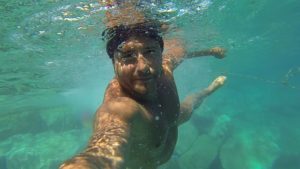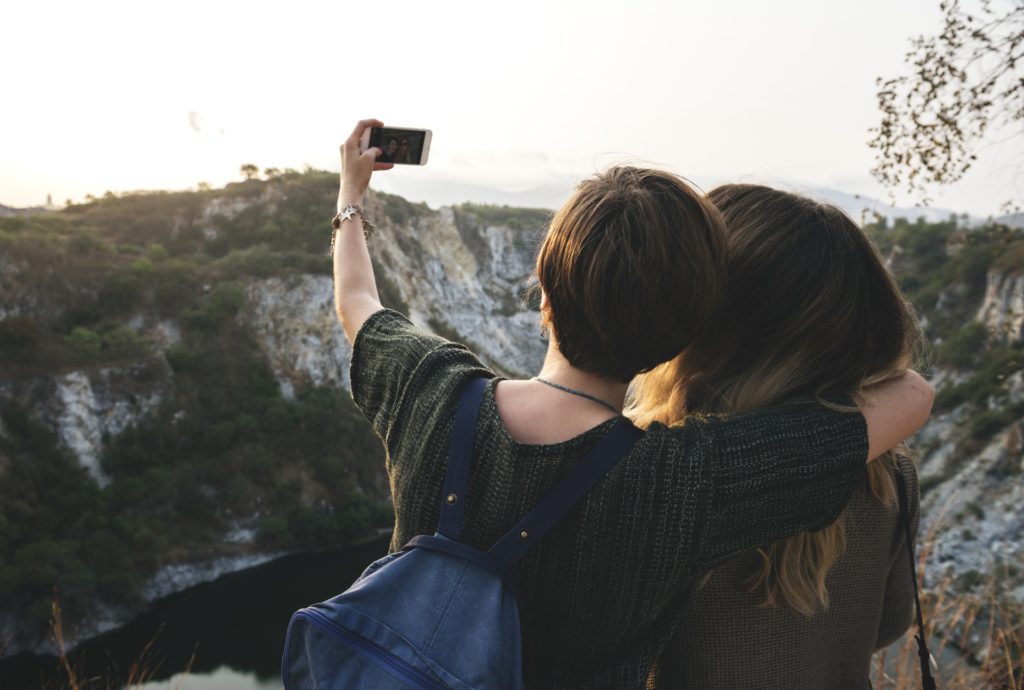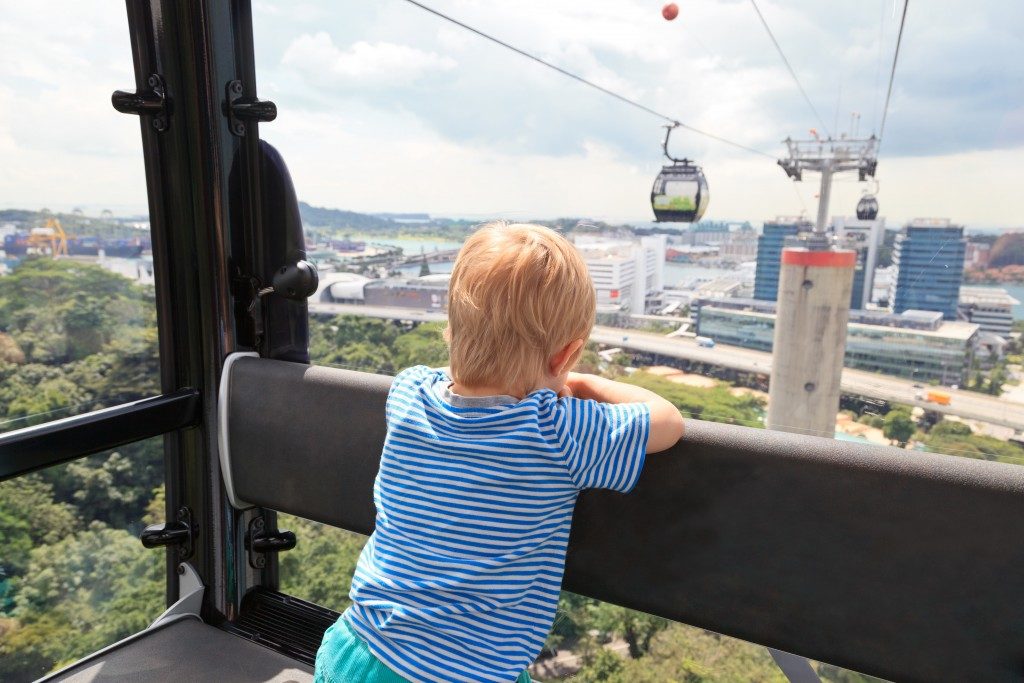Some travel selfies are killer. Literally.
In their desire to get that perfect shot, some travelers do whatever is necessary to outdo other tourists, even if it means risking their life just to take a selfie. Some do it for the likes, while others do so just for the thrill of it. Whatever the reason, the act of taking selfies has already cost the life of hundreds.
There’s nothing wrong with taking selfie shots on every place you visit, unless it takes a turn for the worst.
For the married couple Vishnu Viswanath and Meenakshi Moorthy, they just wanted to capture the perfect photo by posing on a cliff edge when they visited Yosemite National Park. They didn’t know it was the last picture they’d take together.
The rising number of selfie deaths
No trip is complete without a proof shot that you’ve been there. You went to Japan and saw Mt. Fuji? Receipts or didn’t happen. You sat on the edge of the Grand Canyon? Then where are the photos?
The more outrageous and dangerous the shot, the more likes and shares it will get. So why settle for a normal selfie when you can do a handstand or a jumpshot on a cliff?
Viswanath and Moorthy are just two of many others who risked their life for that perfect shot.
Selfie death is characterized by individuals who suffered fatal accidents while attempting to take self-taken photos. It’s a death that could have been avoided if the individual hadn’t been taking a selfie, as defined by the study Me, Myself, and My Killfie: Characterizing and Preventing Selfie Deaths.
From 2011 to 2017, there are already 259 selfie-related deaths reported worldwide. This still doesn’t include the growing number of selfie-related deaths in 2018. Though it may seem like a small figure, knowing the reasoning behind these useless deaths can make one question how much selfies are worth.
The causes of selfie deaths include falling from cliffs and buildings and getting run over by oncoming trains. However, most of these casualties are reportedly due to drowning. There are also reported cases of deaths due to animals, electrocution, and firearms.
Of the twenty countries with selfie-related deaths, India records the highest number of cases, accounting for almost 60 percent of the fatalities. This led to local authorities to take necessary measures to stop likely deaths, such as raising warnings and requesting tourits to avoid taking selfies near the sea. In fact, Mumbai has already banned taking selfies in numerous areas, and in the state of Goa, there are already areas declared as no-selfie zones.
It’s not just India raising the warning flag towards such acts. When the annual visitors surged in Sydney’s Wedding Cake Rock, authorities noticed that a lot of these tourists visited the spot to take a “danger selfie”, perched on the rock ledge or doing handstands. It was soon closed off to the public.
Despite the warnings and prohibitions from authorities, some tourists would rather not listen and still aim for that perfect short.
This is exactly what happened to a 20-year-old man who fell to his death after attempting to take a photo on a cliff edge in Western Australia’s The Gap. The man and his friends went outside the marked areas just to achieve their desired shot.
They #DoItForTheGram
 What makes a picture Instagram-worthy? For some, it’s not just the aesthetics but the effort and risk it took to capture the ultimate shot. With likes and comments being the social currency of the youth, users are motivated to go to great lengths for that social media-worthy shot.
What makes a picture Instagram-worthy? For some, it’s not just the aesthetics but the effort and risk it took to capture the ultimate shot. With likes and comments being the social currency of the youth, users are motivated to go to great lengths for that social media-worthy shot.
This mindset leads to numerous hashtags and trends daring users to take risky shots, from hanging on the edge of cliffs to standing on top of skyscrapers. Thousands of daredevils risk their life just to get that perfect shot, and hundreds already lost theirs for the sake of it.
Moorthy used the hashtag #socialmediabadasstribe to caption a photo of her sitting on the edge of a cliff at the Grand Canyon North Rim. One the same post, she talked about the limits and boundaries when one is chasing likes instead of sunsets, and she warned her followers about the dangers of such shots, saying that wind gusts can be fatal. Unbeknownst to her, she’d befall this exact fate she warned against.
In 2017, a Russian model went viral after posting a photo of herself hanging from a Dubai skyscraper. Without any rope or harness, the photo shows the model casually hanging off someone’s arm on top of the Cayan Tower. It generated millions of views and thousands of likes from people who find it ridiculous but also awe-inspiring.
It is stunts like this that pushed other tourists to do the same and to achieve even more ridiculous feats. There seems to be a competition on who can take the most dangerous shot.
Who can forget the bear selfie trend in 2014 that dared people to take a photo with a bear? Warnings were raised yet people still chose to ignore it. Other trends that went viral and continue to do so are taking selfies next to volcanoes and on the edge of the Grand Canyon.
It’s near impossible to trace who started each trend, but once one user does it, the rest are quick to follow.
Selfie responsibly
 There are already communities devoted to raising awareness on dangerous selfies and the risks involved in it.
There are already communities devoted to raising awareness on dangerous selfies and the risks involved in it.
The movement Selfie To Die For specifically targets the youth, and it encourages individuals to pledge taking selfies responsibly. They provide examples of photos that are dangerous and only advisable for professionals who are trained for such situations. They also provide real-life incidents of selfie-related deaths, such as the Spanish man who died of electrocution while trying to take a selfie on top of a moving train.
There’s no stopping people from taking travel selfies. It has become the norm, and immediately sharing these shots on social media is now second nature. While most do it for the likes and comments, posting travel photos online also became a way for people to share their travel experiences and stories to friends and families. However, these senseless selfies deaths need to be prevented, and it’s necessary to constantly remind tourists that no photo is worth dying for.
Listen to warnings and assess the danger involved before taking that one shot that could possibly be your last.




